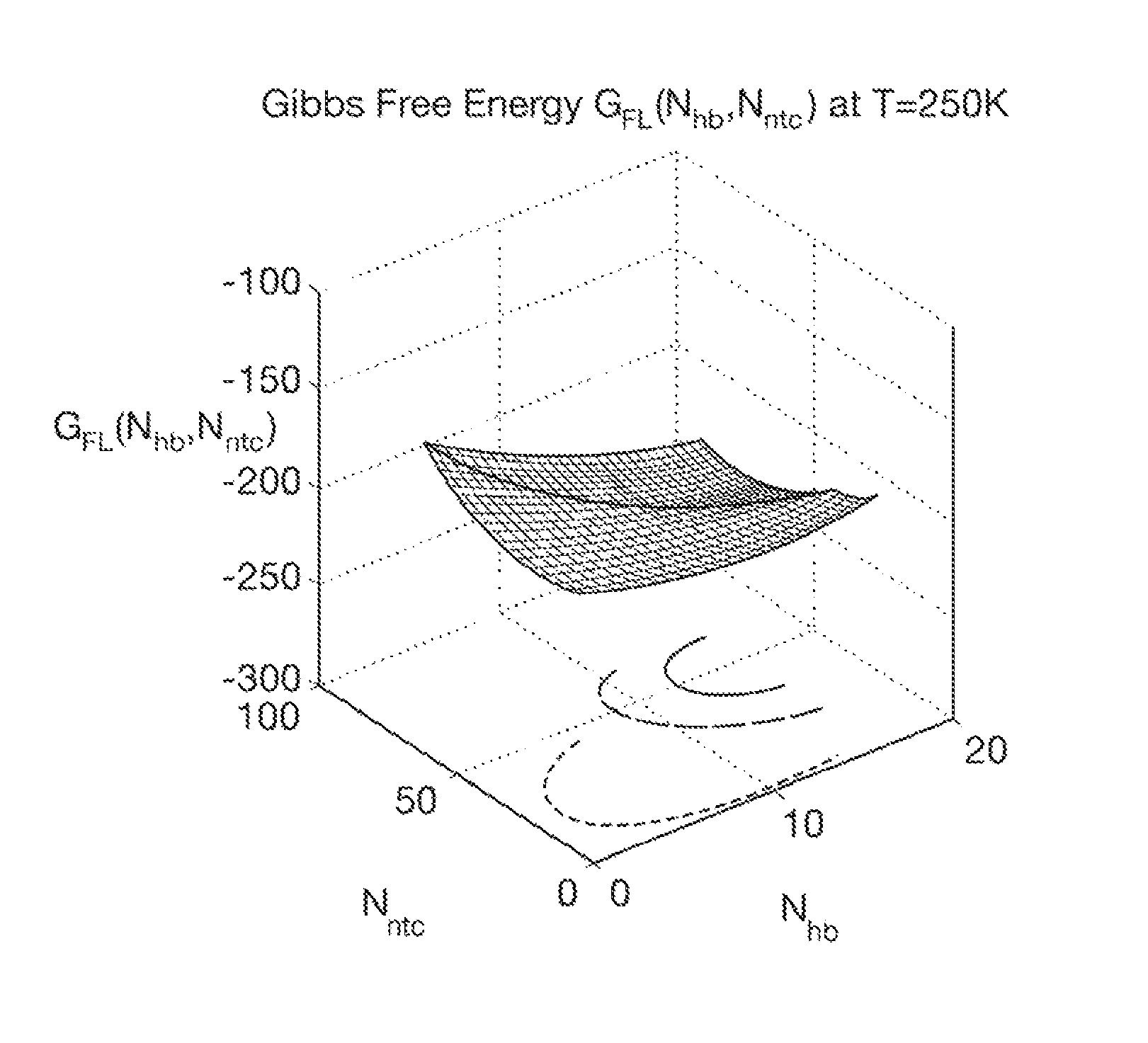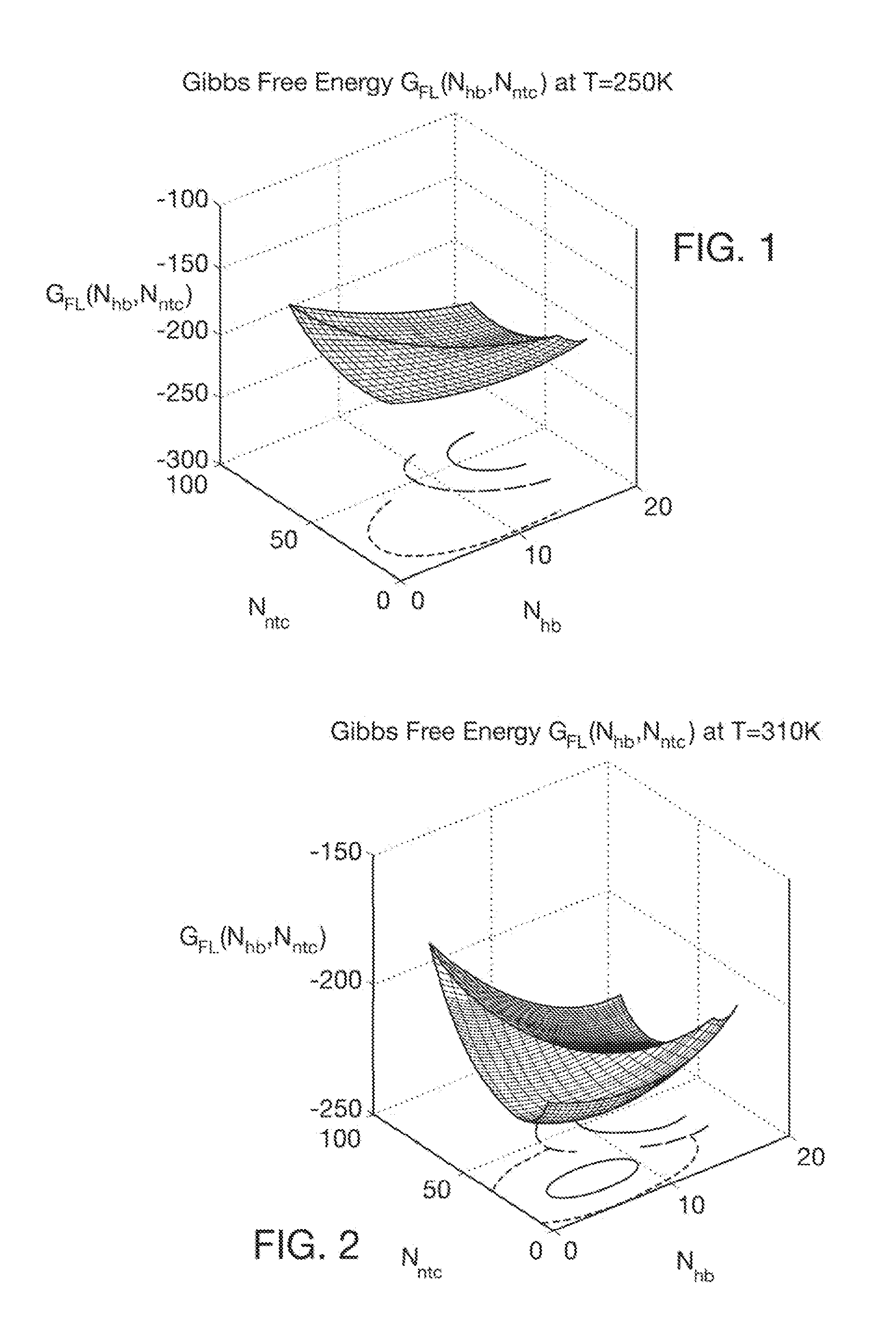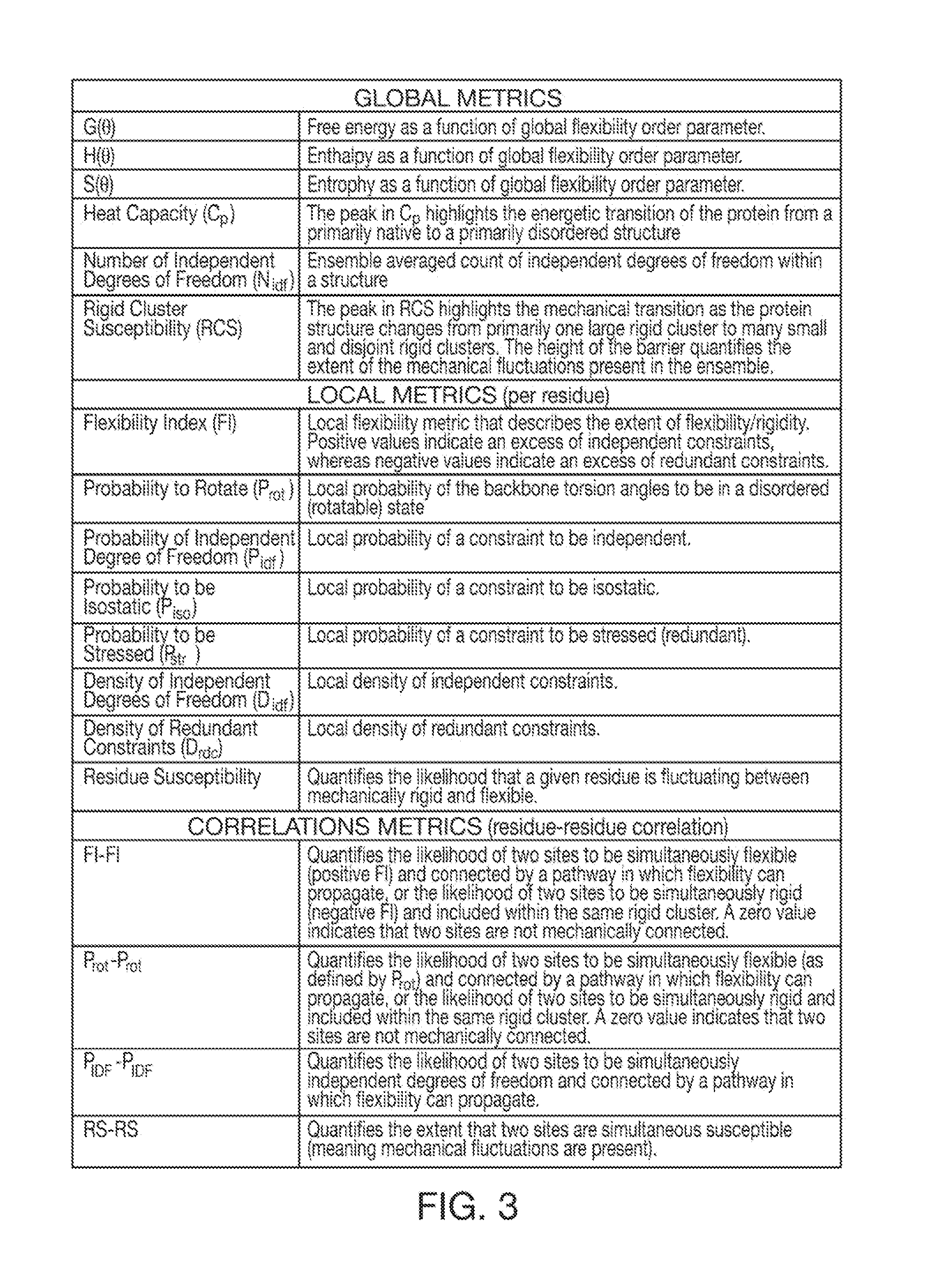Computer implemented system for protein and drug target design utilizing quantified stability and flexibility relationships to control function
a computer implemented and stability-based technology, applied in the field of computer implemented system for protein and drug target design utilizing quantified stability-based flexibility relationships to control function, can solve the problems of search problems, insufficient efficiency or accuracy for the majority of real-world applications, and extremely compute-intensive computational protein design. achieve the effect of improving catalytic efficiency and fast compu
- Summary
- Abstract
- Description
- Claims
- Application Information
AI Technical Summary
Benefits of technology
Problems solved by technology
Method used
Image
Examples
example representations
[0667]In practice, the general representation for a conformation interaction described above will not be used fully for a given interaction type. In some cases, the energy or entropy parameters need not be explicitly specified because they play a passive role. For example, the conformation interaction shown in FIG. 46 represents atomic structure of a chemical group as a rigid body when it is exposed to solvent in a clathrate environment. In the preferred embodiment, all internal DOF are eliminated from the chemical group using a full allotment of passive constraints whenever solvent controls atomic motion.
[0668]FIG. 46 is an illustration of a passive conformation interaction that makes a chemical constituent rigid when it is exposed to a clathrate solvent environment. Circles represent rigid bodies in the body-bar network, and there are enough passive bars placed between the bodies to eliminate all internal DOF within the structure.
[0669]The general representation for conformation i...
PUM
 Login to View More
Login to View More Abstract
Description
Claims
Application Information
 Login to View More
Login to View More - R&D
- Intellectual Property
- Life Sciences
- Materials
- Tech Scout
- Unparalleled Data Quality
- Higher Quality Content
- 60% Fewer Hallucinations
Browse by: Latest US Patents, China's latest patents, Technical Efficacy Thesaurus, Application Domain, Technology Topic, Popular Technical Reports.
© 2025 PatSnap. All rights reserved.Legal|Privacy policy|Modern Slavery Act Transparency Statement|Sitemap|About US| Contact US: help@patsnap.com



